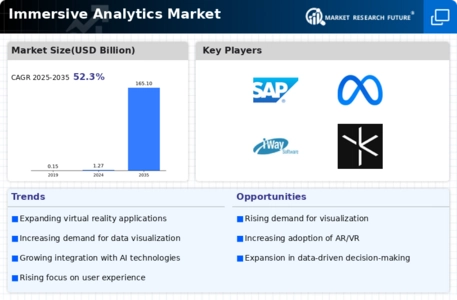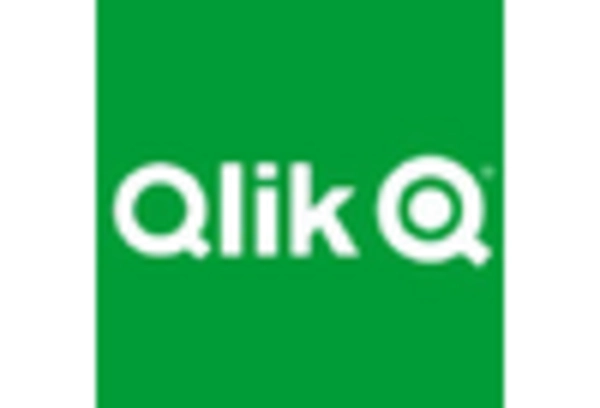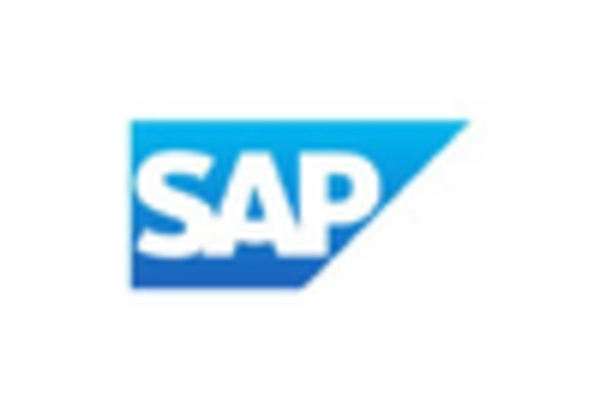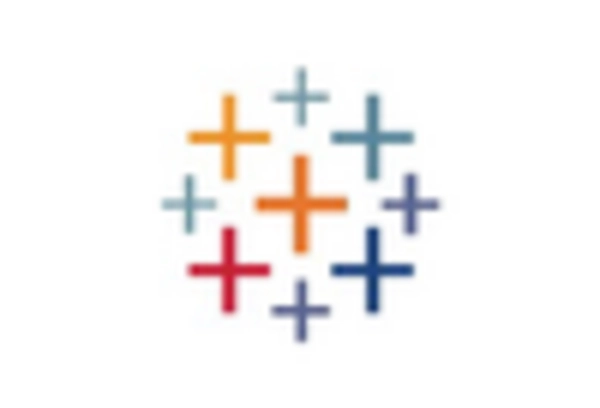Market Share
Immersive Analytics Market Share Analysis
The demand for advanced data visualization and analytics solutions has led to an increase in demand for immersive analytics market. Immersive analytics draws on virtual reality (VR), augmented reality (AR) and mixed realities (MR) technologies creating environments that can be immersed into with interactivity with data. One major trend in this market has been the utilization of Virtual Reality (VR) for data visualization and exploration purposes; VR enables users experience living within a digital environment where three-dimensional representations of datasets provide patterns, insights or any other kind of information so as to enable understanding through its immersion effect which makes it more intuitive compared two-dimensional analysis views. This is especially beneficial to those involved in analyzing complex datasets including decision-makers who can interact with spatially embedded information thus obtaining deeper insights into patterns and trends based on factors such as time series. Business intelligence and data-driven decision-making processes are also notable for the inclusion of AR. The use of AR in immersive analytics which has taken a center stage in various enterprises these days enables users to overlay digital information onto the physical world within real time insights and contextually relevant data. This trend changes the manner in which professionals interact with data while operating in real-life situations such as during meetings, presentations or field operations.
Moreover, immersive analysis market is experiencing adoption of blended reality solutions for data visualization and collaboration. Mixed Reality combines both VR and AR elements creating an experience where digital meets physical environment seamlessly. In an immersive analytic scenario mixed reality allows users to visualize and interact with data on a virtual shared space hence enabling collaborative data discovery as well as decision making. In essence this trend is value adding when it comes to complex projects facilitating team work among team members regardless of their geographical locations. In addition, there is a shift occurring towards democratizing data analytics through immersion technologies. As intuitive end-user-centered solutions for companies dealing with immense datasets become available, various employees are being given an opportunity to discover insights from those datasets even if they don’t possess analytical skills vital for that task. This is consistent with broader industry direction aiming at making big-data analytics embedded into organizational decision support systems. Another significant development happening in the immersive analytics market pertains to its integration with artificial intelligence (AI) along with machine learning (MI) technologies. AI-powered analytic solutions employ machine learning algorithms so as to consume large volumes of data sets producing conclusions. These capabilities furthered by AI/ML integration render predictive analytics that are more advanced, anomaly detection plus smartly guided decisions tools by the system collectively known as “immersive analytics”.

















Leave a Comment